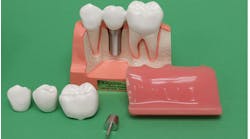The key credit factors, guidelines, and underwriting ratios for most health-care specialty banks have not changed materially over the last 20 years, even during economic downturns, recessions, and pandemics. However, these five Cs of credit for dental practice finance lending are definitely impacted by macroeconomic and industry challenges:
- Credit
- Cash flow
- Collateral
- Collections
- Character
Some of the recent industry challenges facing many dental practice owners include these trends:
- Rising practice overhead
- Clinical and office staff shortages
- Declining insurance reimbursements
- Deteriorating economic indicators, such as high inflation and rising interest rates
These key lending criteria will often determine whether your business loan will be approved or declined, regardless of the dental industry headwinds.
Credit
The first thing a bank looks at to determine if a dentist is qualified for a practice loan are their personal credit scores, because even if the borrower is a high-income earner, high producer, and has tremendous net worth and liquidity levels, low personal credit scores will still disqualify them for a personal or business loan. This also includes the borrower’s long-term payment history, credit history, and relationship with prior debtors.
You may also be interested in ... Using financial statement analysis to maximize your profits
Any late pays, charge-offs, defaults, increases in credit card debt balances, decreases in available credit facilities, and other derogatory financial disclosures may lower your credit score and could negatively impact your ability to borrow money for both personal and business purposes.
Cash flow
Cash flow is defined as the net amount of cash and cash equivalents being transferred in and out of a business. In the dental practice financing space, you will often hear the phrase, “Cash flow is king.” Positive cash flow enables you to cover expense obligations, reinvest in the practice, return money to owners, and provide a buffer against future challenges. It is also an important risk mitigant for banks to offset the lack of tangible assets as the primary collateral (defined below) for a dental practice loan.
Several methods can be used to analyze a company’s cash flow, including the debt-service coverage ratio (DSCR), which is a measurement of a business’s available cash flow to pay current debt obligations. Global debt-service coverage ratios (GDSCR) are used by most health-care specialty lenders to determine if you have the capacity to make payments, including personal living expense calculations.
Decreases in practice revenues and/or increases in practice overhead expenses, business debt, and personal living expenses may lower GDSCR and could negatively impact your ability to borrow money for business purposes.
Collateral
Collateral is defined as the assets that are pledged as security for the loan. Should your business borrow money and fail to repay the debt as promised, collateral gives the lender another way to recover their investment by seizing the asset. For most dental practice finance loans, the primary collateral is your dental practice, which has some tangible assets (equipment, supplies, and accounts receivable), but the vast majority are intangible assets (goodwill, patient records, etc.). It is important to track the fair market value of your practice, amount of practice debt, and strength of the secondary market, which offers potential buyers to purchase your practice. These are all important factors for banks to determine if you have sufficient enterprise or practice value for your loan request.
Decreases in practice revenues and/or increases in practice overhead and practice debt may lower practice sale, EBITDA, and ultimately collateral valuations, and it could negatively impact your ability to borrow money for business purposes.
Collections
Collections are defined as the amount of money the practice collects minus any write-offs, discounts, or coupons. Historically, the vast majority of dental practices report an annual increase in collections each year, and according to the 2022 Dental Economics/Levin Group Annual Practice Survey, 90% of the practices had a higher production in 2021 versus 2020, and 70% reported even higher production in 2022 versus 2021.1 The dental industry has shown tremendous resiliency, adaptability, and innovation to continue to grow revenues and increase patient profits, services, and payment options, while maximizing new dental technologies and efficiencies.
You may also be interested in ... Private practice purchase guidelines for today's new dentists
Decreases in practice collections brought on by staffing shortages, declining insurance reimbursements, and deteriorating economic conditions may reduce both your top and bottom lines and could negatively impact your ability to borrow money for business purposes.
Character
Character is defined as the lender’s faith in the borrower’s honesty, reputation, track record, and financial integrity. This is where the bank looks at a borrower’s personal and financial background. Current and past information about loans, credit, and timeliness in repayment is examined. Lenders look at the borrower’s overall credit history and consider whether the applicant has a reputation for honesty and timeliness with financial obligations. Know your customer and compliance due diligence bank requirements often include searches for clean dental licenses, LexisNexis public records, Dun & Bradstreet business reports, UCC liens, and Google.
Any derogatory disclosures uncovered during the due diligence, underwriting, or closing processes could negatively impact your ability to borrow money for business purposes.
The five Cs of credit for dental practice finance lending are used by banks to measure the credit worthiness of dental loan requests. As bank regulators are becoming increasingly concerned about managing risk, it is important for dental borrowers to understand the key drivers for credit risk analysis. As many dental practice owners regularly track key performance indicators (KPIs) focusing on important industry benchmark metrics, it is also important to ensure that your practice hurdles the critical underwriting ratios to continue to borrow funds despite economic or industry challenges.
Editor's note: This article appeared in the August 2023 print edition of Dental Economics magazine. Dentists in North America are eligible for a complimentary print subscription. Sign up here.
Reference
- Levin RP. Profit down, overhead up (a lot): findings from the 2022 Dental Economics/Levin Group Annual Practice Survey. Dental Economics. April 10, 2023. https://www.dentaleconomics.com/macro-op-ed/article/14290305/findings-from-the-2022-dental-economicslevin-group-annual-practice-survey






